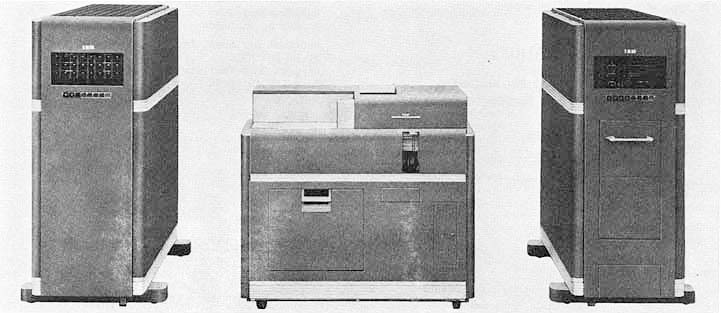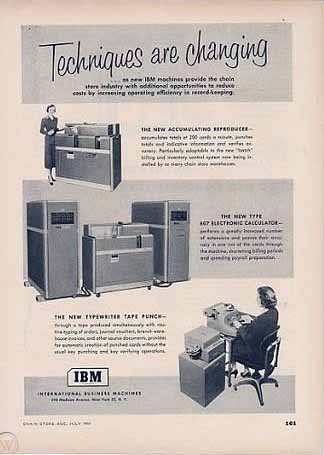The IBM 607 Electronic Calculating Punch


The IBM 607 Electronic Calculator is designed for use by business and industry. Because of its expanded capacity, the overwhelming majority of business calculations requiring multiple machine operations are performed and checked in a single operation. It is capable of performing and checking 14,000 computing operations a minute.The memory capacity of the 607 makes it possible to use intermediate calculated results as well as original data in solving a problem. Other necessary information not punched in cards, such as tax percentages, discount rates, and overtime factors, may be entered as required.
Thus this was essentially a 604 with memory. The 607 was to be followed in 1957 by a transistorized 608 model, the first all solid-state computing machine commercially marketed.